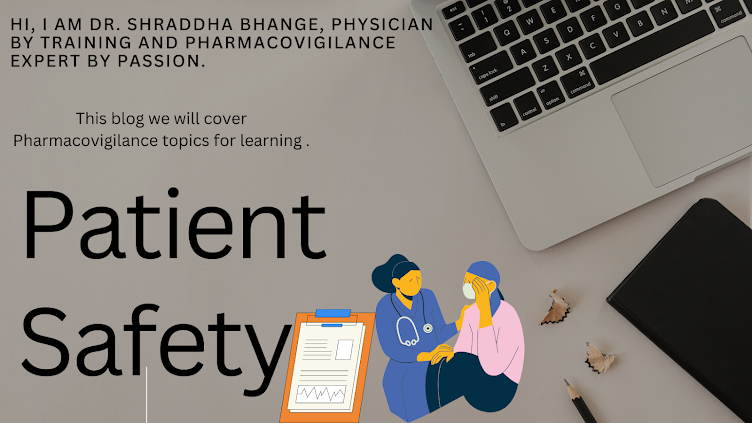Have you
wondered why PV professionals seem to be under stress regarding meeting
timelines? Its friday evening and you have plans but then the last minute SUSAR
comes in inbox and your friday is gone.We all have some or the other time faced
this as PV professionals.
What are the timelines in PV and why they are so
urgent and important?
We can divide this topic in 2 sections for ease
of understanding.
1. ICSR timelines (Individual Case Safety
Reports)/Adverse drug event reports.*
2. Aggregate report timelines
3. Others
In this blog i wanted to cover ICSR timelines
and Aggregate report consisting of ICSRs, so as to keep the length of blog
short and easy for comprehension.
Every Health Authority (HA) has there own
timelines as per regulations, i will highlight four main HA timelines i.e. EU,
US, India and Japan.
1. Europe
a) Spontaneous ICSRs:
Submit the valid ICSR (EEA) (European Economic
Area) and non-EEA serious (non life threatning and non -fatal) within 15
days from initial receipt of the information, and EEA non-serious ICSR within
90 days from initial receipt of the information to EudraVigilance (EV)).
Non-serious non-EEA ICSRs should not be submitted
to EV.
We should remember it says within 15 days, most of the HA
mean it as soon as possible but within 15 days, this is important to understand
and make sure to write it this way in internal SOPs.
Also, serious (fatal and life threatening) ICSR the
timeline is within 7 days for EEA and Non-EEA.
b) Clinical ICSRs:
SUSARs (suspected serious unexpected adverse reactions)
that are fatal or life-threatening are submitted as soon as possible but within
07 days and relevant follow-up information within an additional 08
days from initial receipt of the information .
In addition to reporting to EU, this needs to be
submitted to Ethics Committee and Investigators.
All other suspected serious unexpected adverse
reactions (non life threatening and non -fatal) are submitted to the
HAs concerned and to the Ethics Committee concerned as soon as possible but
within 15 days from initial receipt of the information
2. United States
a) Spontaneous ICSRs:
ICSRs that are serious and unexpected, whether foreign or
domestic, are to be submitted as soon as possible but within 15 calendar days
from initial receipt of the information and must submit follow-up reports
within 15 calendar days of receipt of new information to FDA.
The non-SUSAR cases timelines are covered in aggregate
reporting timelines.
b) Clinical ICSRs:
Submit unexpected fatal or life-threatening suspected
adverse reaction (SUSARs) as soon as possible but within 7 calendar days from
initial receipt of the information to FDA.
In addition to FDA, they are to be submitted to all
participating investigators in an IND safety report as soon as
possible, but within 15 calendar days from receipt of information and to Ethics
committee as applicable.
3. INDIA
a) Spontaneous ICSRs:
All serious AEs/ADR (adverse events (AE) and adverse drug
reactions (ADR)) must be reported to regulatory authority CDSCO/PvPI, IPC
within 15 days from receipt of information .
All non-serious AEs/ADR must be reported to
CDSCO/NCA-PvPI, IPC within 30 days from receipt of information.
b) Clinical ICSRs: All
serious adverse events must be submitted to DCGI within 14 calendar days
receipt of information.
In addition to DCGI, it needs to be submitted to
ethics committee (local and national) and Investigators.
One important thing to note here is, for India, it says
licensing authority and regulatory authority. Licensing authority can be DCGI
or state FDA and regulatory authority is CDSCO but submission to PVPI is
needed too. This is my understanding. There is email (xml file + DCGI format)
and paper submission.
4. Japan
ICSRs:
ICSRs that are serious and unexpected (unpredictable),
are to be submitted as soon as possible but within 15 days from initial
receipt of the information to PMDA.
ICSRs that are serious and expected (predictable)
within 30 days. This excludes serious death expected ICSR which were
caused by new drug within 2 years of approval and ICSR from drug
which is under EPPV program (Early phase post marketing vigilance) which are to
be submitted within 15 days.
Non serious unexpected (unpredictable) ICSRs are submitted
annually and non serious listed (predicatble) not submitted.
EPPV-Early phase post marketing vigilance - This is
for newly approved drugs when 2 years have not passed from the date
of approval for drugs
Aggregate reports:
1. US:
ICSRs that are serious listed, non-serious unlisted and
listed are submitted at quarterly intervals, for 3 years from the date of
approval of the application, and then at annual intervals.Each quarterly report
is submitted within 30 days of the close of the quarter and each annual report
within 60 days of the anniversary date of approval of the application.
Follow-up information to adverse drug experiences submitted in a periodic
report may be submitted in the next periodic report.
*for the sake of ease i have considered ICSR and Adverse
drug reaction report and event as equivalent, however they are not and standard
definitions can be found in HA guidance documents.
References:
Dr.shraddha Bhange.
Content co-developed by:
Dr.Sridhar Yeshamaina
Content co-developed by:
Dr.Sridhar Yeshamaina
Connect with me Via comments below or on linkedin. (I do not respond to Facebook messages)
Support the cause of better rural education with me:ThinkSharp Foundation http://thinksharpfoundation.org/#home

